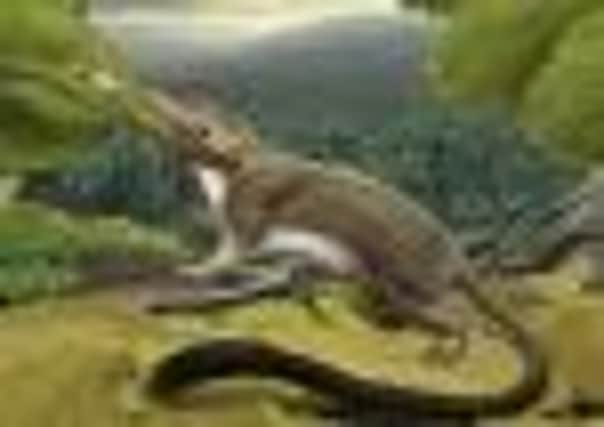Humans evolved from ‘shrew’, scientists claim


And now scientists have created an identikit image of the shrew-like mammal from which most of the world’s warm-blooded creatures – including humans – are descended.
It evolved around 200,000 years after the extinction of the dinosaurs, linked to an asteroid hitting Earth 65 million years ago. And from this small beginning sprang every mammal that gives birth to live young by virtue of having a womb and placenta, including dogs, cats, rodents, whales and mankind. Placental mammals are the largest branch of the mammalian family tree, with more than 5,100 living species. Non-placental mammals include kangaroos and other marsupials, and egg laying monotremes such as the duck-billed platypus.
Advertisement
Hide AdAdvertisement
Hide AdScientists yesterday published an artist’s impression of the shrew, based on a six-year investigation. They recorded 4,500 physical traits for 86 mammalian species, including 40 that are now extinct.
The features, which include the presence or absence of wings, teeth and bone types, produced a data set ten times larger than any used before to study mammalian ancestry. Combined with molecular information from DNA samples, it allowed the scientists to pinpoint the likely start of the story of placental mammals. Recent work has suggested they date back long before the dinosaurs were wiped out. The US research, reported in journal Science, confirms a hypothesis that our ancestors only flourished after the dinosaurs departed.
Dr Jonathan Bloch, associate curator of vertebrate palaeontology at the Florida Museum of Natural History, who co-led the study, said: “With regards to evolution, it’s critical to understand the relationships of living and fossil mammals before asking questions about ‘how’ and ‘why’.
“This gives us a new perspective of how major change can influence the history of life, like the extinction of the dinosaurs. This was a major event that potentially then results in setting the framework for the diversification of mammals, including our own very distant ancestors.”
Colleague Dr Maureen O’Leary, of Stony Brook University, New York, said: “Discovering the tree of life is like piecing together a crime scene. It is a story that happened in the past that you can’t repeat. The new tools of DNA add important information, but so do other physical clues like a body or, in the scientific realm, fossils and anatomy.
“Combining all the evidence produces the most informed reconstruction.”